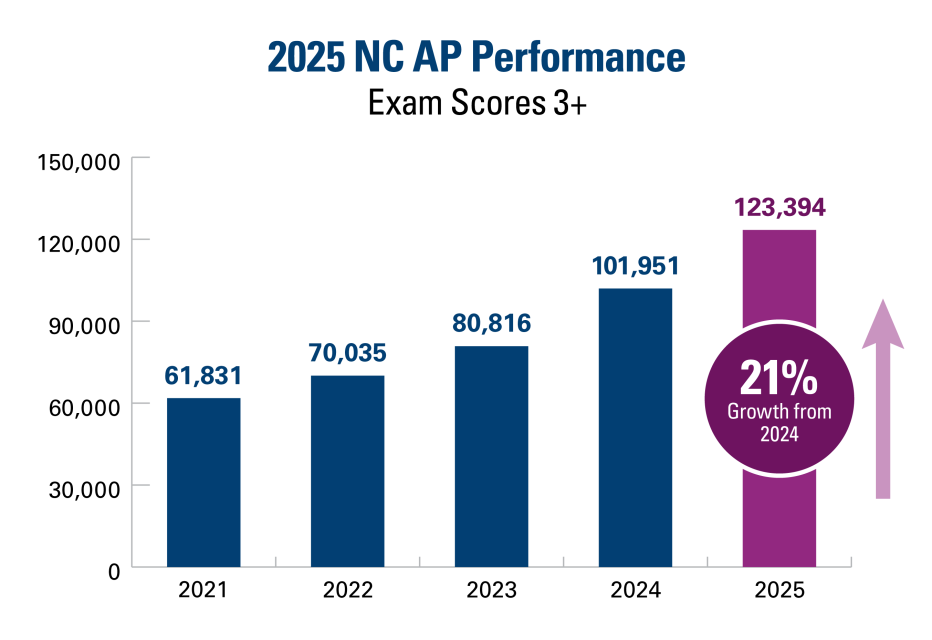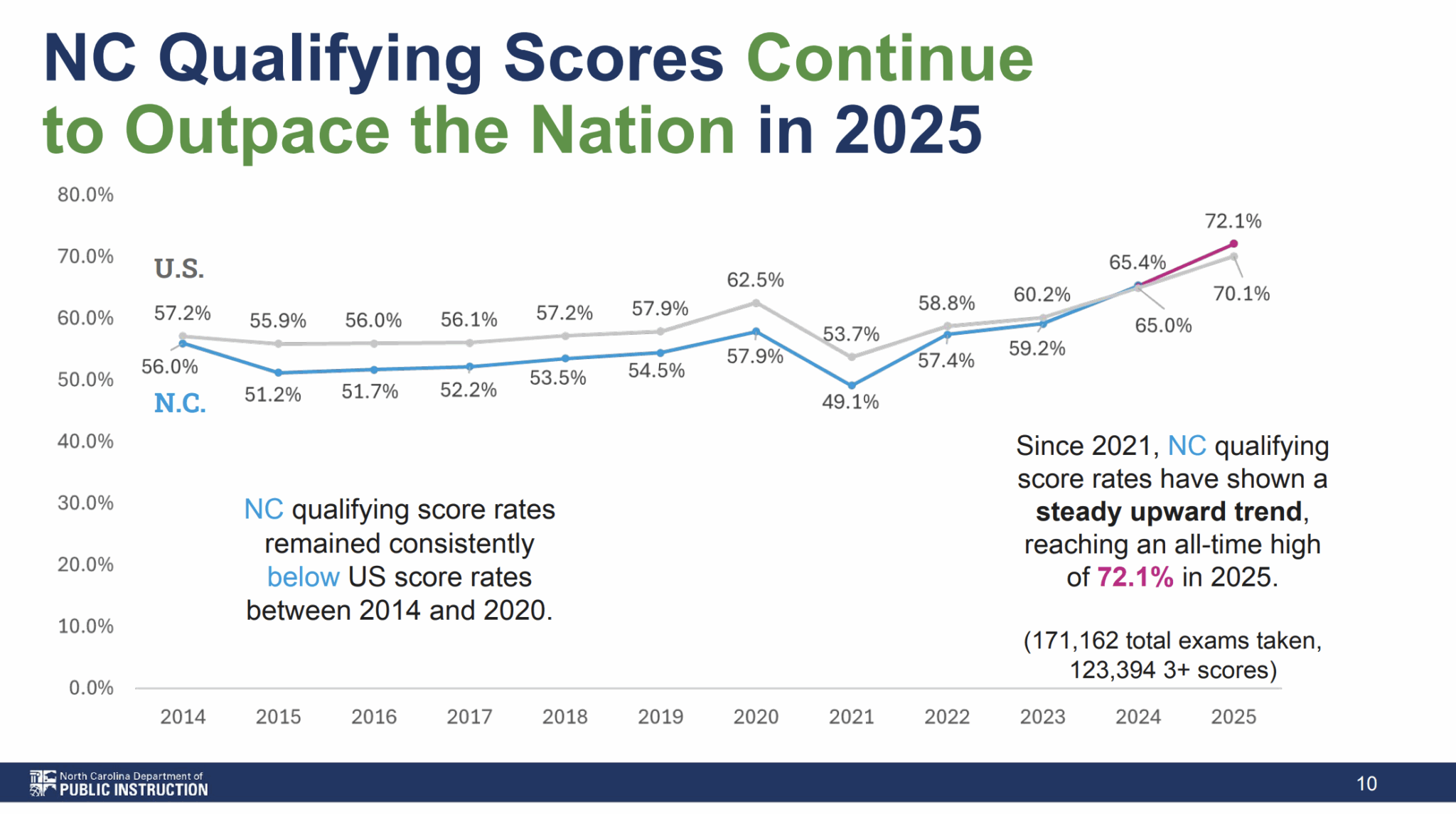North Carolina Students 'Making History" With Advanced Placement Scores, Participation Rates, DPI Says
By Sergio Osnaya-Prieto, EdNC
North Carolina students’ participation and success in Advanced Placement (AP) exams reached their highest level during the 2024-25 school year, according to data presented at the State Board of Education’s biannual planning and work session on November 5.

“North Carolina public school students are making history,” said Superintendent Maurice “Mo” Green at a Wednesday press conference. “For the fourth year in a row, the participation and passing scores for Advanced Placement exams have increased. And this year’s metrics are the highest they have ever been.”
The College Board’s AP program allows students to take college-level courses in high school. In most cases, if students score a qualifying score of 3, 4, or 5 on an AP course exam, they can earn credit for the corresponding course at their college or university.
More than 90,500 students took AP exams in the last school year, a 7.3% increase from 2024. That contributed to a 9.8% increase in tests taken, which reached 171,162.
Students also performed better on these exams than ever before, according to the Department of Public Instruction (DPI). The number of exams with qualifying scores of 3 or higher increased by 21% to reach a success rate of 72.1%. That means North Carolina students surpassed the national success rate of 70.1%.

“Why is this so important? Why do we often talk about this metric? Because this means that a student in North Carolina scoring a 3 on an exam, a 4 on an exam, a 5 on an exam are just as prepared for postsecondary work as someone in New Jersey, Montana, Nebraska, Texas, California — around the world,” said Beth Cross, assistant director for Advanced Learning and Gifted Education at DPI.
Across every region of the state, the number of tests taken and tests with passing scores went up. The Southeast’s AP test-taking growth rate was the highest at 10.8%, while the Northeast saw the highest growth rate in performance at 28.0%.
These metrics also increased for every ethnic group in the state, according to DPI data. Black students’ qualifying scores went up by 33.5%, Latino students’ went up 26%, and American Indian students’ went up by 49.7%.
“It’s a clear reflection that when students are given the opportunity, they rise,” said Sneha Shah-Coltrane, senior director for Advanced Learning and Gifted Education at DPI.

The state has made an effort to raise these metrics since 2015, when lawmakers established the NC AP Partnership. According to a DPI press release, the partnership created a four-person team that gives districts targeted support, especially low-performing ones, and professional development.
The 2015 legislation also provided state funds to cover all AP exam fees for students, as well as International Baccalaureate (IB) and Cambridge International Education (CIE) fees and exams. Those costs totaled more than $17.6 million for the 2024-25 school year.
“Historically, the cost of the AP exam has been one of the barriers to entry for students interested in pursuing college credit while still in high school,” said Shah-Coltrane in the press release. “Eliminating that concern has opened the door for thousands more students from all different backgrounds to reach their full potential.”
District leaders joined Green for Wednesday’s press conference to share their own work expanding access and success in these exams.
Alamance-Burlington Schools, for example, eliminated its honors precalculus course to direct students towards its new AP counterpart.
“This has successfully given students who hadn’t previously taken an AP course a chance to experience and succeed in a rigorous academic environment,” said the district’s superintendent, Dr. Aaron Fleming.
Charlotte Mecklenburg Schools Deputy Superintendent Dr. Melissa Balknight attributed her district’s record results in AP exams to a summer training for teachers closely aligned to College Board standards, among other tactics.
The district’s 49,000 potential college credits earned through AP courses translate to $14.3 million in potential tuition savings for the district’s families, Balknight said.